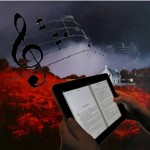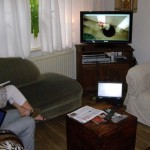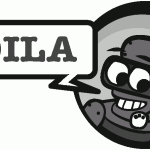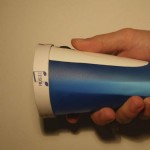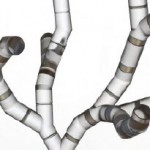By Jeroen Peters [M12 Report, PDF, 200K]
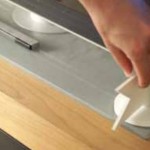
Technological advances in computational, networking and sensing abilities are leading towards a future in which our daily lives are immersed with interactive devices that are networked and interoperable.
It is imperative that users are able to understand such complex intelligent and interactive environments. Design has an important role in facilitating users in making sense of the many connections between devices in a networked environment.
Two design solutions based on tangible interaction have been developed that allow users to manage wireless connections between devices in a smart living room context.
